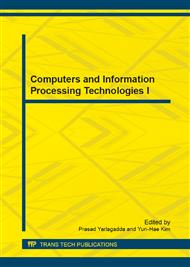p.223
p.232
p.237
p.241
p.245
p.252
p.258
p.262
p.267
Reverse Search Particle Swarm Optimization to Deal with Dynamic Optimization Problems
Abstract:
Multiswarm approaches are used in many literatures to deal with dynamic optimization problems (DOPs). Each swarm tries to find promising areas where usually peaks lie and many good results have been obtained. However, steep peaks are difficult to be found with multiswarm approaches , which hinders the performance of the algorithm to be improved furtherly. Aiming at the bottleneck, the paper introduces the idea of sequential niche technique to traditional multiswarm approach and thus proposes a novel algorithm called reverse space search multiswarm particle swarm optimization (RSPSO) for DOPs. RSPSO uses the information of the peaks found by coarse search of traditional multiswarm approach to modify the original fitness function. A newly generated subswarm - reverse search subswarm evolves with the modified fitness function, at the same time, other subswarms using traditional mltiswarm approach still evolve. Two kinds of subswarm evolve in cooperation. Reverse search subswarm tends to find much steeper peak and so more promising area where peaks lie is explored. Elaborated experiments on MPB show the introduction of reverse search enhances the ability of finding peaks , the performance of RSPSO significantly outperforms traditional multiswarm approaches and it has better robustness to adapt to dynamic environment with wider-range change severity.
Info:
Periodical:
Pages:
245-251
Citation:
Online since:
June 2014
Authors:
Price:
Сopyright:
© 2014 Trans Tech Publications Ltd. All Rights Reserved
Share:
Citation:


